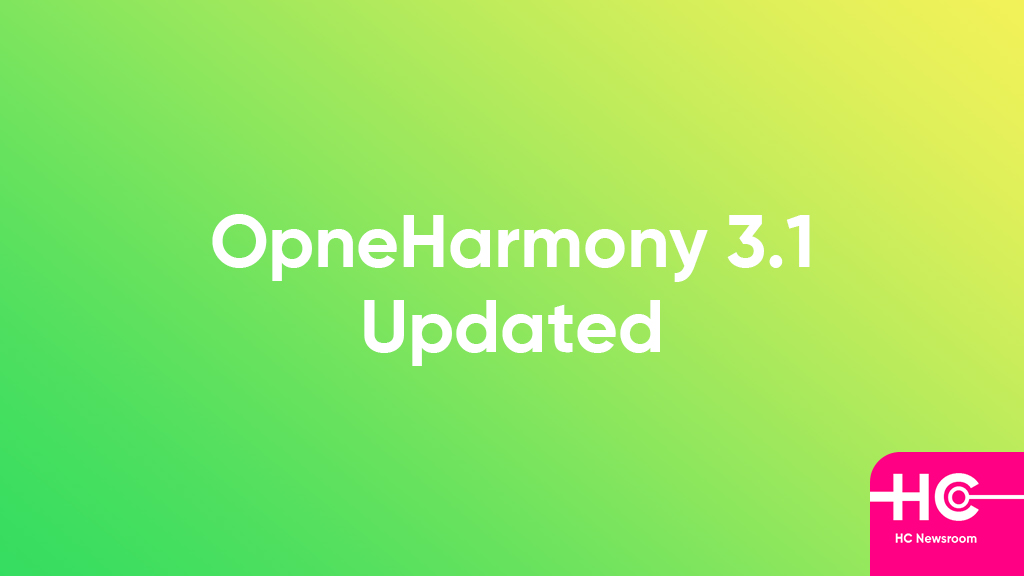HarmonyOS
Huawei OpenHarmony 3.1 updated to enhance the basic features

In January 2022, the OpenAtom foundation has released the OpenHarmony 3.1 beta that provides an environment for developers to create something good and exciting using Huawei HarmonyOS capabilities. In the latest edition, OpenAtom is rolling out OpenHarmony 3.1 updated version that brings new features and improvements.
According to the information, OpenHarmony 3.1 updated release comes with a new Huawei HarmonyOS SDK Ohos_sdk 3.1 (API version 8) and improved basic features as well as tool matching relationships.
What’s new:
- Improved basic capabilities of standard systems
- Improved distributed capabilities of standard systems
- Improved system application framework capabilities
- Improved application capabilities of standard system
The above list of changes will open new ways and now becomes convenient for the developers to build new apps using improved and optimizes capabilities. So, let’s explore these new improvements in detail.

Improved basic capabilities of standard systems
The local basic audio and video playback capabilities, video hard coding and decoding, basic camera preview, and shooting capabilities, Render Service, framework, 2D/3D drawing capabilities, new animation, and display effects framework will be improved.
The new framework for window management provides more flexible Window Framework capabilities, supporting full-screen, split-screen, window forms, and drag-and-drop capabilities across Windows. Further, the display management capabilities, support for split-screen, and advanced management capabilities of on and off-screen, support for window animations and effects.
Basic function support for mouse, keyboard, touchpad, general sensor acceleration, basic function support for gyroscope, hall, motor vibration, etc. Local Selection, New/Advanced Internationalization Features, System Resources, Profile Resources.
Supports time and time zone synchronization management capabilities, new support for clipboard, lock screen services, static wallpaper, and download service management capabilities. System service status monitoring function, new cross-device on-call capability (cross-device enabling FA capability), long-term, short-term and delayed task scheduling capabilities.
Advanced memory management functions, support for basic power management functions, and advanced process scheduling functions. Local account, domain account, and local account binding functions, distributed account ID derivation, and state management functions, local application rights management, distributed rights management capabilities.
It provides Wi-Fi STA, AP, P2P related infrastructure and JS API, new Bluetooth BR, SPP, BLE related capabilities and JS API, new Location Service Subsystem, and Location Service Framework capabilities.
Improved distributed capabilities of standard systems
The distributed soft bus network switching networking, P2P connections, streaming, Bluetooth, and other capabilities are enhanced. Support hardware mutual assistance, resource sharing, support mirroring and extended screen projection, etc.
Device online and offline and advanced functions such as PIN code authentication, storage management, application sandbox isolation, public data sandbox isolation, and other capabilities, support for distributed databases, distributed data objects, support for local database access, and cross-application database access and other capabilities.
Improved system application framework capabilities
ArkUI custom drawing capability and Lottie animation capability, keyboard, mouse interaction operation capability. Declarative Web Components, XComponent component capabilities. Card abilities provide basic abilities such as adding, deleting, and refreshing cards.
Providing multi-user capability, multi-end friendly basic JS toolchain and runtime capability, support for basic functions of multi-HAP installation, built-in query, multi-user, permission management, support for distributed notification, notification template functions.
Improved application capabilities of standard system
System application creation, including system desktop, system UI, system settings, camera, gallery, call, contact, notification, memo, file chooser, input method, and other application support.
(Via: ithome)






